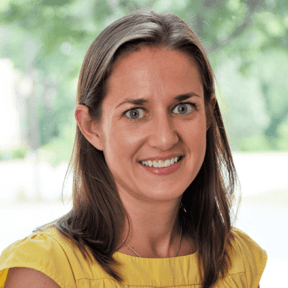Integrating math and kitchen skills is a great way to provide experiential learning, to explore math concepts in real-world scenarios, and to allow for concrete, practical application of math skills in a setting that is familiar to all learners. So, let’s take a look at ways to involve all students, regardless of where they are in their math learning.
Matching and Sorting Activities
For students at a fundamental learning level, using kitchen materials is a truly practical way to apply matching and sorting skills. When we empty the dishwasher, we are doing nothing more than matching and sorting items from it into drawers and cabinets. Provide some extra support by placing picture or word labels on drawers and doors to clarify where items belong. Sorting silverware or plasticware into trays is a meaningful task for students who do best with seated work. With supervision, this task can be set up either as a 1:1 matching activity (by having your student match utensils: one fork, one spoon, and one knife into the labeled or color-coded spots in the tray), or it can be a more complex sorting activity by having your student sort a pile of utensils into the different slots in the tray. Use colored plasticware to incorporate another visual cue into the task. Start more simply by only providing two different items to sort (forks and spoons). Once that is mastered, add a third item (knives).
Other ways to practice sorting in the kitchen can include placing paper, plastic, and glass items into different bins for recycling. Putting groceries away is great activity for using matching or sorting skills. Setting the table is another way to reinforce 1:1 matching skills. Or increase the complexity of the task by requiring your student to either gather items from the cupboards, count the number of needed items, or sort items into place settings. A placemat with matching shapes or color coding is a meaningful way to provide a visual support for this task.
Counting and Quantity
Whether your student is counting at a 1:1 correspondence level, rote counting to 10, or can determine quantity up to 20 and beyond, there are so many opportunities to put numeracy and counting skills to use in the kitchen. Counting out items to use in a recipe is a fun place to start, and your student gets to enjoy something to eat as a result! Whether you need two eggs to make brownies, three scoops of raisins to make trail mix, or eight pepperonis to place on a pizza, instruction can be individualized to meet your students where they are while providing them with the opportunity to use numbers and solve problems in real life.
Packaging food items to use later in a recipe, for snacks for a whole group, or to pack with lunch, is another way to practice counting skills. Provide instructions for your student to package individual snacks for a group of peers or family members. For example, ask them to put six carrots in each bag, or two scoops of pretzels, or five crackers and five pieces of cheese. Again, provide support to meet your student’s need, whether it’s explicit written instructions, line drawings as visual supports, or checkboxes to aid in counting out the correct quantity.
Taking inventory or stock of items in the kitchen can be a practical application of counting skills as well. With this information, students can also work on determining enough vs. not enough. Start by counting the number of items on hand (for example, cans of beans) and then determine if there is enough to make a given recipe (taco soup).
Measurement
So many skills go into the act of measuring, whether it’s quantity, volume, or mass. Students must read and understand different forms of measurements. Often fractions are involved. Motor skills of scooping, leveling, and pouring are required for accurate measuring. Selecting the appropriate measurement tool is a skill unto itself. And all of these can be brought to life in the kitchen!
Using a digital or analog kitchen scale, students can practice weighing items in a variety of ways. How much does an apple weigh? Fill a container to a given weight (e.g., fill the bowl with 8 oz. of rice). Compare items by weight (which weighs more, a tomato or a lemon?).
In the kitchen, students can learn to measure volume in a real-world setting. For those who benefit from repeated opportunities to practice a skill, follow recipes that require repeated measuring. For example, making lemonade from a mix requires repeatedly filling the scoop to the top and pouring it into a pitcher. Be sure to also practice with different types of materials, like wet and dry ingredients. Measuring and leveling a cup of sugar requires different skills than measuring a cup of water.
Support your students’ selection of measurement tools by color-coding spoons and cups or highlighting the instructions in a recipe to clarify measurement amounts. For those learning equivalent fractions and conversions, have them practice selecting different measurement tools based on a conversion. For example, determining how many scoops of a ½ cup are needed to make 1 ½ cups.
More Fun to Be Had”¦
Hopefully, these ideas have sparked your creativity and have provided a starting point for thinking about how to apply math concepts in the kitchen. The options are truly endless as students can practice doubling or halving a recipe, dividing food items into equal shares, and working with the passage of time to determine how long a cooking activity will take. Have fun making math meaningful in the kitchen!



